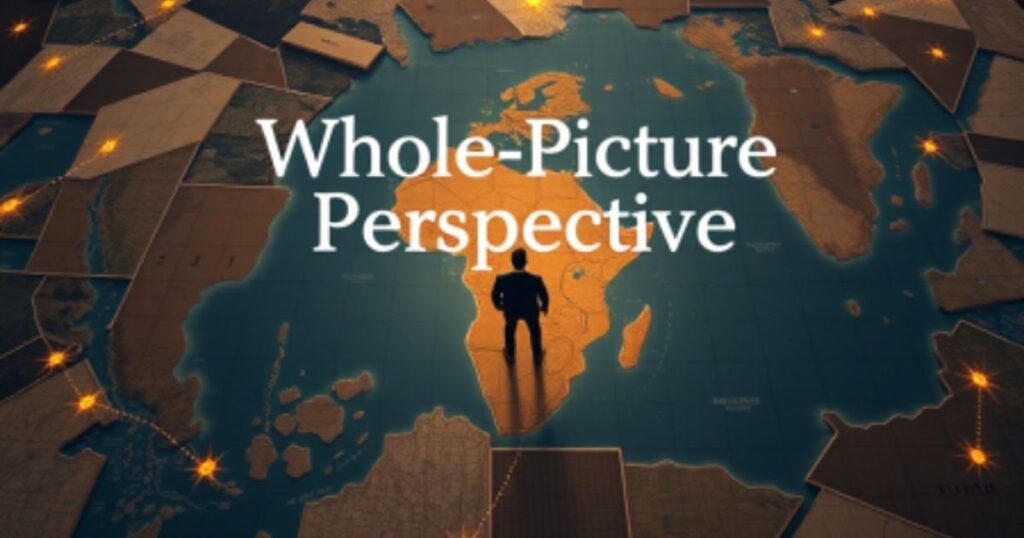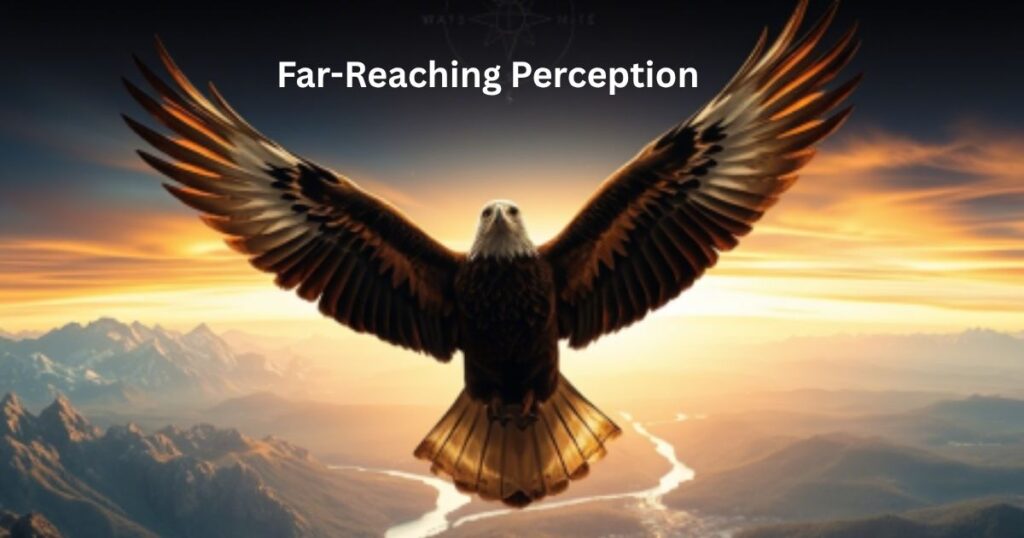In today’s fast-moving world, being able to see the big picture is a powerful skill. Whether you’re leading a team, managing projects, or planning for long-term goals, the ability to see the big picture helps you stay focused on what truly matters. It means you don’t just look at one task,you see the whole picture and understand how everything connects. Employers value someone who sees the big picture because they can think ahead, solve problems, and guide others in the right direction.
Instead of getting stuck in small details see the big picture thinkers focus on purpose and direction. In professional settings, using the right words to show this skill can make your resume stand out. That’s why many people look for a big picture thinking synonym or another word for a bigger picture that feels fresh and meaningful. In this article, you’ll learn new ways to express this valuable skill with clarity and confidence.
Main Points
- Saying “big-picture thinker” is okay, but there are better and more unique ways to say it on a resume.
- Employers like people who can see more than just small tasks. They want people who understand the full plan.
- Words like “strategic visionary” or “macro thinker” sound more professional and clear than “big-picture thinker.”
- If you apply for jobs in leadership, strategy, or innovation, it’s good to show that you can see the big picture.
- People in digital marketing, finance, or global companies often need this skill to succeed.
- You should also give examples on your resume, like how you helped your team or planned for the future.
- Using fresh words makes your resume stand out and feel more personal and smart.
- Thinking long-term helps in roles like project management, planning, or building new ideas.
- It’s important to use the right words to match the job, and always keep your resume clear, strong, and honest.
- Jobs that need teamwork and decision-making want people who look at the full story, not just one small part.
Whole-Picture Perspective

A whole-picture perspective means you don’t just look at small problems,you see how everything fits together. Imagine looking at a puzzle. You don’t focus on one piece,you see the full image. That’s what this phrase means. It’s useful in places like multinational companies, where every decision affects many teams, markets, and people. When working in academia or market research, it also helps to think about the full system, not just one result.
This phrase works well when talking about transformation, evaluation, or overview. If you’re part of a project management team handling a brand overhaul, having a whole-picture perspective can help you stay on track while others get lost in the details. It’s also useful in fields like child psychiatry or green technologies, where you have to think of the global scale and not just individual actions.
Global Understanding
Global understanding means knowing how things work around the world. This can include culture, business, and even ecological and economic elements. If you’re part of a digital marketing or finance team, it helps to understand how people in different places think and act. For example, what works in the U.S. might not work in Asia or Europe. That’s why cultural awareness is part of global understanding.
You’ll often hear this phrase used in professional settings when people talk about international expansion or working with regional markets. If your company is growing fast, like a startup, or trying to rebrand itself for a bigger audience, having this type of insight helps. It also shows that you care about more than just your own team,you see the big stage.
Comprehensive Vision
When someone has a comprehensive vision, they see everything clearly,from small steps to big goals. It’s like having a map and knowing every road, turn, and destination. This phrase is often used in strategy meetings or leadership training, especially in business landscapes where every choice counts. If you’re planning a five-year project or making a new investment portfolio, this type of vision can keep things on track.
People with a comprehensive view are often seen as planners or visionaries. They take the time to understand the full picture before making decisions. This is useful not only in technology or risk management, but even in Chappo-like platforms or StackExchange where broad thinking helps solve complex problems.
Strategic Insight
Strategic insight is about making smart choices based on long-term thinking. Instead of reacting fast, you pause, plan, and move in the right direction. This phrase is great for people in leadership roles, especially when working on important tasks like project planning, company growth, or even a rebrand. In the U.S., many companies value people who can show this kind of skill.
If you’ve ever helped lead a cross-functional team or guided a group through change, you probably used strategic insight,even if you didn’t call it that. It’s also used in areas like Merriam-Webster’s word development or Oxford Dictionaries, where planning for future language trends is part of the job.
Macroscopic View
A macroscopic view means you’re looking at the big system, not just one part. Like when scientists study the whole body instead of just one organ. This term is great for fields like academia, economic research, or technology, where systems thinking matters. People with a macroscopic view are often seen as having strong analysis, reasoning, and logic.
It also shows you’re a person who values depth, not just surface knowledge. This word is helpful when writing a resume, explaining your job skills, or describing your role in a multinational company. Whether you work in finance, market research, or green tech, seeing the whole system is always a strength.
Find more words!
If you want even more smart ways to say “ability to see the big picture,” check out online tools like CommunityBot on StackExchange or vocabulary sites with smart NLP tools. You can also visit pages like Merriam-Webster or Oxford Dictionaries to explore rich lexical collections.
You’ll discover new words that sound professional, creative, and fresh. These tools often include clear definitions, examples, and usage in real conversations or writing.
Far-Reaching Perception

This phrase sounds powerful and deep. Having far-reaching perception means you see how today’s choices affect tomorrow’s results. This is important in risk management, digital marketing, and startup planning. You need to think about what may happen ten times from now, not just next week. It’s a great phrase to use in job interviews or when talking about your strategic skills.
People with far-reaching perception don’t just guess,they plan. They use foresight, awareness, and long-term thinking to guide their actions. If you’ve ever helped during a brand overhaul or led a team through big change, this term fits you well.
Panoramic Outlook
A panoramic outlook is like standing on top of a mountain and seeing the whole view. It’s a good way to say you can see both the small tasks and the big goals. In project management or marketing, this helps you build something that works well from every angle. It’s also helpful in fields like child psychiatry, where understanding the full person matters.
This term feels warm, balanced, and creative. People with this outlook often spot patterns, guide teams, and make thoughtful choices. It’s a term that shows you care about both details and the full picture.
Read this Also: 17 Synonyms for “Bittersweet”
Wide-Angle Observation
This term is a modern way to say that you’re alert, aware, and paying attention to everything going on. It sounds technical, but it’s great for professional settings, especially if you work in a startup, finance, or tech field. You’re not only seeing what’s right in front of you,you’re watching the side roads too.
Using this phrase shows you’re thoughtful and inclusive in your thinking. It tells people that you understand systems, notice trends, and bring helpful solutions to the table.
Bird’s-Eye View
A bird’s-eye view means you can see everything from above. You’re not stuck in the small stuff. This is one of the most common and friendly ways to say you understand the full picture. It’s used in everything from real estate and logistics to corporate planning. It works well in resumes, too.
You can use this phrase to talk about how you lead teams, create long-term plans, or run big projects. It shows you think beyond just your desk or daily task.
Broad Perspective
When you have a broad perspective, you stay open-minded. You look at ideas from different sides. This is helpful in U.S. workplaces where diversity and teamwork matter a lot. Having this skill means you care about people, systems, and what’s right in the long run.
It also shows emotional intelligence, not just book smarts. Whether you work in market research, leadership, or cultural awareness, this phrase makes your thinking style sound clear and kind.
All-Encompassing Vision
This phrase makes you sound like someone who sees everything,from start to finish. It works well in large projects, like global marketing campaigns or economic elements planning. If you’ve worked on big systems or helped a company grow across a regional market, this is your phrase.
It’s also useful in rebrand strategies where you need to keep many parts moving together. This phrase shows you’re not just looking at tasks,you see how all the tasks fit into the bigger goal.
Unified Perception
Unified perception is when you see how different parts connect into one whole. This matters a lot in cross-functional teams, where people from different departments must work together. It shows that you’re someone who brings people and ideas together.
Use this phrase if you’ve ever worked on a team that needed lots of communication, feedback, and shared goals. It fits roles in technology, academia, and any group that needs strong direction and understanding.
Grand Scheme Awareness
This term makes you sound smart and thoughtful. It means you understand how small actions affect the big system. If you work in government, nonprofits, or strategy, this is a strong phrase to use. It shows you’re thinking ahead and making smart moves.
It’s great for resumes and project summaries where you want to show you helped with the overall plan, not just one step. You might have helped shape something that will matter for years, even if you only worked on it for a short time.
Complete Overview
A complete overview means you know everything happening in a project. You’re not just guessing,you’re informed. This is great for managers, planners, and leaders who guide teams from idea to launch. It works well for resumes, especially in project management and finance jobs.
Having a complete overview means you can make good choices, stop problems early, and help everyone stay on track. Whether you work with people or systems, this phrase tells others that you’ve got it covered.
Full-Scope Insight
Last but not least, this phrase is all about having a deep and wide understanding. It’s great for jobs that involve data, technology, or strategy. If you often help with decision-making or guide a team through change, this phrase shows that you do more than just complete tasks,you understand the whole story.
Full-scope insight sounds smart and serious, but it’s also very clear. Use it when you want to show how your thinking helps your team win.
Learn to See the Big Picture in Everyday Work

In your daily job, it helps to think beyond just your task. Try to understand how your work fits into the bigger goal. This is how people in project management, technology, and finance grow into leaders.
Many multinational companies want workers who think this way. It shows you care about the team and the results. People like Elon Musk and Slava Velikiy do this well,they connect small steps to big changes.
Why Good Leaders See the Big Picture
A good leader doesn’t just focus on small details. They think ahead. They ask, “What’s the long-term plan?” That’s why leadership roles need this skill.
In places like digital marketing, academia, or a fast-growing startup, it’s important to guide the team with clear direction. Great leaders like Chappo and experts in market research know how to guide others by seeing the full view.
How to See the Big Picture in a Team
Working in a cross-functional team means dealing with many people and ideas. If you only look at your own work, you miss out. But when you look at everything together, you help the whole team do better.
That’s how people in green technologies, risk management, or regional markets build smart teams. They use strategy, share knowledge, and help others stay focused. It’s all about clear communication and strong thinking.
Train Your Mind to See the Big Picture
You can learn this skill with practice. Read more, ask questions, and try to see things from many sides. This helps build your thinking, your vocabulary, and your problem-solving skills.
Tools like Oxford Dictionaries, Merriam-Webster, and StackExchange help with this. They show how words connect to ideas, and how to use better expression, phrases, and synonyms in your writing and work.
See the Big Picture When Planning the Future

If you want to plan well, you need to think far ahead. A person with strong foresight looks past today’s problems. They think about the next year, or even a five-year plan.
This matters in fields like investment portfolio building, brand overhaul, or growing a business on a global scale. It also helps in child psychiatry, where big-picture thinking can help change a life. Seeing the future helps you move in the right direction.
FAQ’s
What is the ability to see the bigger picture?
The ability to see the big picture means you understand how small tasks fit into larger goals or long-term success.
What is another word for being able to see the big picture?
Another way to say see the big picture is being a strategic thinker, visionary, or someone who understands the full plan, not just parts.
What is the meaning of seeing the bigger picture?
To see the big picture means you look beyond the present moment and think about future results, goals, and impact.
What is another way to say looking at the bigger picture?
You can say broad perspective, panoramic view, or comprehensive vision instead of looking at or seeing the big picture.
Why is it important to see the big picture at work?
When you see the big picture, you make smarter choices, understand your role better, and help the team reach long-term success together.
Conclusion
In work and life, it’s very helpful to see the big picture. When you have the ability to see the big picture, you make better choices. You understand how each small task fits into something bigger. This helps you stay focused on your goals. It also helps your team work better together. Seeing the whole picture means you look at everything, not just one small part. It’s what smart leaders do every day.
Someone who sees the big picture is often a planner or leader. They help others stay on track. If you’re looking for a big picture thinking synonym, try words like “strategic thinker” or “visionary.” These are good ways to say another word for the bigger picture. No matter the words you use, the idea is the same. Focus on the future, the goal, and the full plan. When you see the big picture, you grow faster and smarter.

Gramcoachpro is your go-to platform for mastering grammar, writing, and communication skills. If you’re a student, teacher, or content creator, we provide easy-to-understand tips, examples, and tools to improve your language — fast and effectively. Our mission is to make better writing simple and accessible for everyone.

